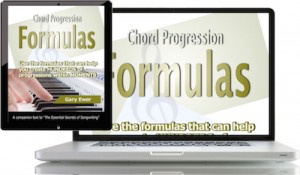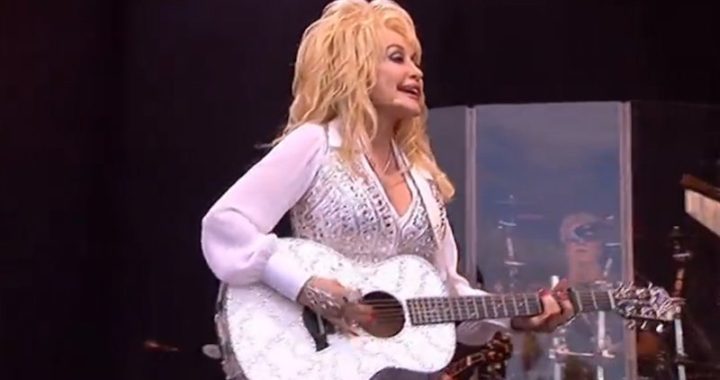It’s not terribly surprising that most people can tell whether they’re hearing a chorus or a verse. That’s a good thing, because songs don’t come with signposts that say, “This is the verse…”; “This is the chorus.”
What I find interesting is that even non-musicians can tell. Songs normally start with the verse, but with some songs — “Jolene” (Dolly Parton) — we can tell (usually right away) that it’s one of those rare chorus-starts. And people with no experience or training in music are able to know.
 “Chord Progression Formulas” shows you a system for creating your own progressions in seconds using some basic formulas, in both major or minor keys. It’s available at the Online Store.
“Chord Progression Formulas” shows you a system for creating your own progressions in seconds using some basic formulas, in both major or minor keys. It’s available at the Online Store.
And how do we know? Generally, the musical energy is more robust in a chorus than in a verse. But what does that mean in practical terms? The first thing we usually notice is that the instrumental accompaniment is more active in the chorus.
Most of the time, the extra activity is very subtle. In “Jolene”, for example, the opening chorus is accompanied mainly with acoustic guitars and light percussion/bass lines underneath. The verse then adds instruments… primarily long tones in a pair of fiddles
But the verse also displays a thinning of the guitar textures. It’s not very noticeable, but that slight difference is all it often takes.
So the differentiation between verse and chorus is a matter of subtleties with regard to the instrumentation. But there is more involved than that. For this song, it comes from the fact that the chorus uses:
- the higher melodic range;
- backing vocals.
Again, it doesn’t take much; it’s all about subtleties. If you find that your chorus isn’t providing the kind of punch you need, “Jolene” shows us the subtle power that comes from a higher melody and some backing vocals.
In addition, try these 3 ideas to help generate a more energetic chorus:
- Double your chorus melody, at the same pitch or at the octave. This can be something that might happen instrumentally, where a lead guitar or other instrument might play the tune as is, or an octave higher, or it could be double-tracking vocals. It’s a great way to boost musical energy. (Here’s an article that can help with the technical aspect of double-tracking.)
- Make chorus melody notes longer, especially the part that includes the title. Longer notes equate to an increase in emotional energy. As you hear Dolly Parton singing the word “Jolene”, you hear the last one get slightly longer, and it adds to the languishing quality of the line. Verse melody rhythms tend to be shorter and more rhythmically active.
- Make your backing instruments for your chorus busier. A more active instrumental accompaniment (like simply adding an extra finger-picking guitar) is usually all that’s needed to make the music more energetic, and set it apart from the verse.
 Written by Gary Ewer. Follow Gary on Twitter
Written by Gary Ewer. Follow Gary on Twitter
 It’s time to declutter your songwriting process. “The Essential Secrets of Songwriting” eBook Bundle packages can help you become a more efficient, prolific songwriter. Get today’s 10-eBook Deluxe Bundle deal: a free copy of “Creative Chord Progressions”
It’s time to declutter your songwriting process. “The Essential Secrets of Songwriting” eBook Bundle packages can help you become a more efficient, prolific songwriter. Get today’s 10-eBook Deluxe Bundle deal: a free copy of “Creative Chord Progressions”










